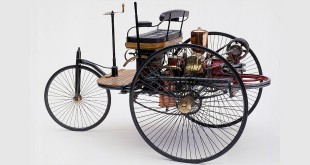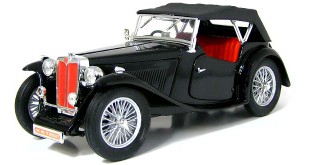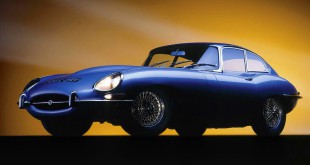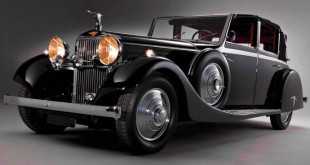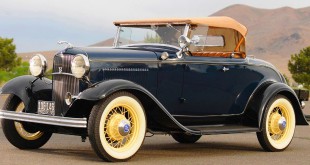 Chevrolet Corvette — The Chevrolet Corvette (1953; United States), America’s first production sports car, had a 6-cylinder engine and an automatic transmission.
Chevrolet Corvette — The Chevrolet Corvette (1953; United States), America’s first production sports car, had a 6-cylinder engine and an automatic transmission.
The Chevrolet Corvette is a sports car that has been manufactured by Chevrolet since 1953. It has been proclaimed as “America’s Sports Car”. It is built today exclusively at a General Motors assembly plant in Bowling Green, Kentucky, but in the past it was built in Flint, Michigan and St. Louis, Missouri. It was the first all-American sports car built by an American car manufacturer. The National Corvette Museum and annual National Corvette Homecoming are also located in Bowling Green, Kentucky.
For 54 years, Corvettes have combined very powerful engines with relative affordability. Examples of engine power include the 400 hp (298 kW) LS2 or 505 hp (377 kW) LS7. Older generations of the Corvette have been criticized for being crude and lacking in refinement by European sports car standards, and their on-limit handling is a divisive issue garnering both praise and reproach. Recent generations of the Corvette, however, are widely seen as being much improved in these areas.
Corvettes tend to emphasize simplicity over technical complexity. Where nearly all competing marques rely on smaller displacement, more complex and faster-revving engines, the Corvette uses a simpler overhead valve (OHV) design coupled with a larger displacement to make up for the lower rev limit pushrods impose. The result is usually less expensive to manufacture and maintain. Another example of this philosophy is the continued use of transverse leaf springs in the suspension. This has fueled the aforementioned “lack of refinement” argument, although the Corvette’s units differ substantially from traditional leaf springs, being made of a composite material and arranged in such a way as to act as stabilizer bars.
History
While the style of a car may be just as important to some as to how well the car runs, it was not until 1927, when General Motors hired designer Harley Earl, that automotive styling and design became important to American automobile manufacturers. What Henry Ford did for automobile manufacturing principles, Harley Earl did for car design. Most of GM’s flamboyant “dream car” designs of the 1950s are directly attributable to Earl, leading one journalist to comment that the designs were “the American psyche made visible.” Harley Earl loved sports cars, and GIs returning after serving overseas in the years following World War II were bringing home MGs, Jaguars, Alfa Romeos, and the like. In 1951, Nash Motors began selling a two-seat sports car, the Nash-Healey, that was made in partnership with the Italian designer Pinin Farina and British auto engineer Donald Healey. Earl convinced GM that they also needed to build a two-seat sports car. Earl and his Special Projects crew began working on the new car later that year, which was code named “Opel.” The result was the 1953 Corvette, unveiled to the public at that year’s Motorama car show. The original concept for the Corvette emblem incorporated an American flag into the design, but was changed well before production since associating the flag with a product was frowned upon.
Taking its name from the corvette, a small, maneuverable fighting frigate (the credit for the naming goes to Myron Scott), the first Corvettes were virtually handbuilt in Flint, Michigan in Chevrolet’s Customer Delivery Center, now an academic building at Kettering University. The outer body was made out of a revolutionary new composite material called fiberglass, selected in part because of steel quotas left over from the war. Underneath that radical new body were standard Chevrolet components, including the “Blue Flame” inline six-cylinder truck engine, two-speed Powerglide automatic transmission, and drum brakes from Chevrolet’s regular car line. Though the engine’s output was increased somewhat, thanks to a triple-carburetor intake exclusive to the Corvette, performance of the car was decidedly lackluster. Compared to the British and Italian sports cars of the day, the Corvette was underpowered, required a great deal of effort as well as clear roadway to bring to a stop, and even lacked a “proper” manual transmission. Up until that time, the Chevrolet division was GM’s entry-level marque, known for excellent but no-nonsense cars. Nowhere was that more evident than in the Corvette. A Paxton supercharger became available in 1954 as a dealer-installed option, greatly improving the Corvette’s straight-line performance, but sales continued to decline.
GM was seriously considering shelving the project, leaving the Corvette to be little more than a footnote in automotive history, and would have done so if not for two important events. The first was the introduction in 1955 of Chevrolet’s first V8 engine (a 265 in³ {4.3 L}) since 1919, and the second was the influence of a Soviet emigré in GM’s engineering department, Zora Arkus-Duntov. Arkus-Duntov simply took the new V8 and backed it with a three-speed manual transmission. That modification, probably the single most important in the car’s history, helped turn the Corvette from a two-seat curiosity into a genuine performer. It also earned Arkus-Duntov the rather inaccurate nickname “Father of the Corvette.“
Another key factor in the Corvette’s survival was Ford’s introduction, in 1955, of the two-seat Thunderbird, which was billed as a “personal luxury car”, not a sports car. Even so, the Ford-Chevrolet rivalry in those days demanded that GM not appear to back down from the challenge. The “T-Bird” was changed to a four-seater in 1958. There have been six generations of the Corvette so far, sometimes referred to as C1 through C6.
 Kids Portal For Parents India Kids Network
Kids Portal For Parents India Kids Network
